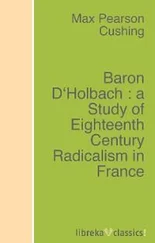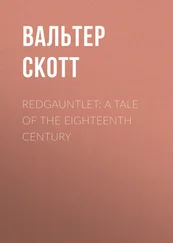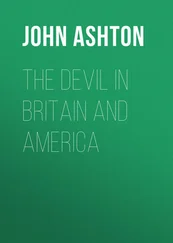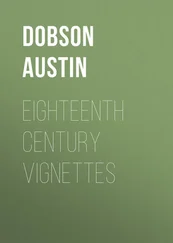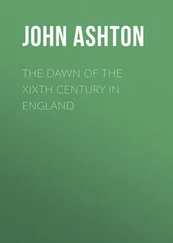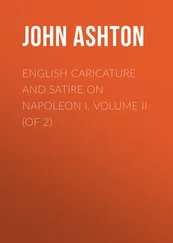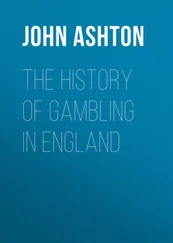John Ashton - Eighteenth Century Waifs
Здесь есть возможность читать онлайн «John Ashton - Eighteenth Century Waifs» — ознакомительный отрывок электронной книги совершенно бесплатно, а после прочтения отрывка купить полную версию. В некоторых случаях можно слушать аудио, скачать через торрент в формате fb2 и присутствует краткое содержание. Жанр: foreign_antique, foreign_prose, на английском языке. Описание произведения, (предисловие) а так же отзывы посетителей доступны на портале библиотеки ЛибКат.
- Название:Eighteenth Century Waifs
- Автор:
- Жанр:
- Год:неизвестен
- ISBN:нет данных
- Рейтинг книги:4 / 5. Голосов: 1
-
Избранное:Добавить в избранное
- Отзывы:
-
Ваша оценка:
- 80
- 1
- 2
- 3
- 4
- 5
Eighteenth Century Waifs: краткое содержание, описание и аннотация
Предлагаем к чтению аннотацию, описание, краткое содержание или предисловие (зависит от того, что написал сам автор книги «Eighteenth Century Waifs»). Если вы не нашли необходимую информацию о книге — напишите в комментариях, мы постараемся отыскать её.
Eighteenth Century Waifs — читать онлайн ознакомительный отрывок
Ниже представлен текст книги, разбитый по страницам. Система сохранения места последней прочитанной страницы, позволяет с удобством читать онлайн бесплатно книгу «Eighteenth Century Waifs», без необходимости каждый раз заново искать на чём Вы остановились. Поставьте закладку, и сможете в любой момент перейти на страницу, на которой закончили чтение.
Интервал:
Закладка:
Milton’s coffin lay open from Wednesday morning, the 4th, at 9 o’clock until 4 o’clock in the afternoon of the following day, when the ground was closed.
With respect to there being no inscriptions on the coffin, Holmes says that inscription-plates were not used, nor invented at the time when Milton was buried; that the practice then was to paint the inscription on the outside wooden coffin, which in this case was entirely perished.
It has never been pretended that any hair was taken except by Mr. Taylor , and by Ellis the player; and all which the latter took would, when cleansed, easily lie in a small locket. Mr. Taylor has divided his share into many small parcels; and the lock which I saw in Mr. Laming’s hands on Saturday morning, the 7th, and which then measured six inches and a half, had been so cut and reduced by divisions among Mr. Laming’s friends, at noon, on Monday, the 9th, that he thus possessed only a small bit, from two to three inches in length.
All the teeth are remarkably short, below the gums. The five which were in the upper jaw, and the middle teeth of the lower, are perfect and white. Mr. Fountain took the five upper jaw teeth; Mr. Laming one from the lower jaw; Mr. Taylor two from it; Hawkesworth one; and another of Mr. Ascough’s men one; besides these, I have not been able to trace any, nor have I heard that any more were taken. It is not probable that more than ten should have been brought away, if the conjecture of the overseers, that some dropped among the other bones, be founded.
In recording a transaction which will strike every liberal mind with horror and disgust, I cannot omit to declare that I have procured those relics which I possess, only in hope of bearing part in a pious and honourable restitution of all that has been taken; the sole atonement which can now be made to the violated rights of the dead; to the insulted parishioners at large; and to the feelings of all good men. During the present repair of the church, the mode is obvious and easy. Unless that be done, in vain will the parish hereafter boast a sumptuous monument to the memory of Milton ; it will but display their shame in proportion to its magnificence.
I collected this account from the mouths of those who were immediate actors in this most sacrilegious scene; and before the voice of charity had reproached them with their impiety. By it those are exculpated whose just and liberal sentiments restrained their hands from an act of violation, and the blood of the lamb is dashed against the door-posts of the perpetrators, not to save, but to mark them to posterity.
Philip Neve.Furnival’s Inn,
14th of August, 1790.
This Mr. Neve, whose pious horror at the sacrilegious desecration of the poet’s tomb seems only to have been awakened at the eleventh hour, and whose restitution of the relics he obtained does not appear, was probably the P.N. who was the author, in 1789, of ‘Cursory Remarks on some of the Ancient English Poets, particularly Milton.’ It is a work of some erudition, but the hero of the book, as its title plainly shows, was Milton. Neve places him in the first rank, and can hardly find words with which to extol his genius and intellect, so that, probably, some hero-worship was interwoven in the foregoing relation of the discovery of Milton’s body; and it may be as well if the other side were heard, although the attempt at refutation is by no means as well authenticated as Neve’s narrative. It is anonymous, and appeared in the St. James’s Chronicle , September 4-7th, 1790, and in the European Magazine , vol. xviii, pp. 206-7, for September, 1790, and is as follows:
First. Because Milton was buried in 1674, and this coffin was found in a situation previously allotted to a wealthy family, unconnected with his own. – See the mural monument of the Smiths , dated 1653, &c., immediately over the place of the supposed Milton’s interment. – In the time that the fragments of several other sarcophagi were found; together with two skulls, many bones, and a leaden coffin, which was left untouched because it lay further to the north, and (for some reason, or no reason at all) was unsuspected of being the Miltonic reservoir.
Secondly. The hair of Milton is uniformly described and represented as of a light hue; but far the greater part of the ornament of his pretended skull is of the darkest brown, without any mixture of gray. 18This difference is irreconcilable to probability. Our hair, after childhood, is rarely found to undergo a total change of colour, and Milton was 66 years old when he died, a period at which human locks, in a greater or less degree, are interspersed with white. Why did the Overseers, &c., bring away only such hair as corresponded with the description of Milton’s ? Of the light hair there was little; of the dark a considerable quantity. But this circumstance would have been wholly suppressed, had not a second scrutiny taken place.
Thirdly. Because the skull in question is remarkably flat and small, and with the lowest of all possible foreheads; whereas the head of Milton was large, and his brow conspicuously high. See his portrait so often engraved by the accurate Vertue , who was completely satisfied with the authenticity of his original. We are assured that the surgeon who attended at the second disinterment of the corpse only remarked, ‘that the little forehead there was, was prominent.’
Fourthly. Because the hands of Milton were full of chalk stones. Now it chances that his substitute’s left hand had been undisturbed, and therefore was in a condition to be properly examined. No vestige, however, of cretaceous substances was visible in it, although they are of a lasting nature, and have been found on the fingers of a dead person almost coeval with Milton.
Fifthly. Because there is reason to believe that the aforesaid remains are those of a young female (one of the three Miss Smiths ); for the bones are delicate, the teeth small, slightly inserted in the jaw, and perfectly white, even, and sound. From the corroded state of the pelvis, nothing could, with certainty, be inferred; nor would the surgeon already mentioned pronounce absolutely on the sex of the deceased. Admitting, however, that the body was a male one, its very situation points it out to be a male of the Smith family; perhaps the favourite son John , whom Richard Smith , Esq., his father, so feelingly laments. (See Peck’s ‘ Desiderata Curiosa ,’ p. 536). 19To this darling child a receptacle of lead might have been allotted, though many other relatives of the same house were left to putrefy in wood.
Sixthly. Because Milton was not in affluence 20– expired in an emaciated state, in a cold month, and was interred by direction of his widow. An expensive outward coffin of lead, therefore, was needless, and unlikely to have been provided by a rapacious woman who oppressed her husband’s children while he was living, and cheated them after he was dead.
Seventhly. Because it is improbable that the circumstance of Milton’s having been deposited under the desk should, if true, have been so effectually concealed from the whole train of his biographers. It was, nevertheless, produced as an ancient and well-known tradition, as soon as the parishioners of Cripplegate were aware that such an incident was gaped for by antiquarian appetence, and would be swallowed by antiquarian credulity. How happened it that Bishop Newton , who urged similar inquiries concerning Milton above forty years ago in the same parish, could obtain no such information? 21
Читать дальшеИнтервал:
Закладка:
Похожие книги на «Eighteenth Century Waifs»
Представляем Вашему вниманию похожие книги на «Eighteenth Century Waifs» списком для выбора. Мы отобрали схожую по названию и смыслу литературу в надежде предоставить читателям больше вариантов отыскать новые, интересные, ещё непрочитанные произведения.
Обсуждение, отзывы о книге «Eighteenth Century Waifs» и просто собственные мнения читателей. Оставьте ваши комментарии, напишите, что Вы думаете о произведении, его смысле или главных героях. Укажите что конкретно понравилось, а что нет, и почему Вы так считаете.

